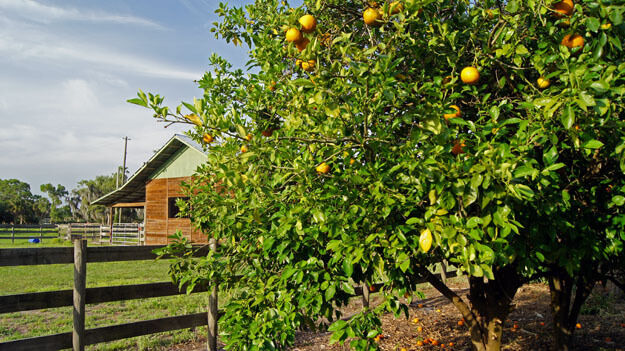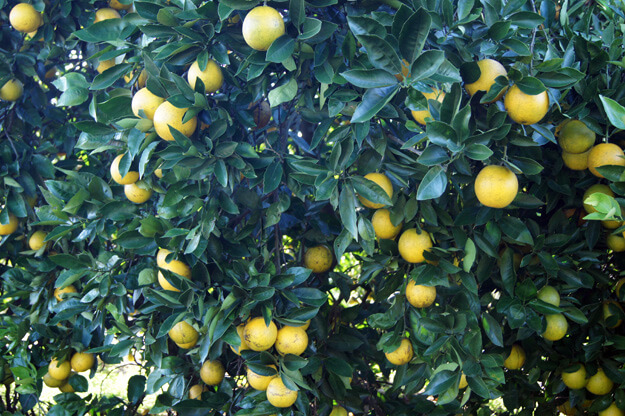Last Updated on September 23, 2022
Authentic Florida nirvana is growing citrus in your own backyard. If you’re new to citrus gardening and are learning to plant, water, and care for new trees, we were recently recommended the following trees by a citrus nursery specialist:

- Bearss Lemon – bears fruit July – December
- Ponkan Tangerine (Chinese Honey) – bears frut December – January
- Minneola Tangelo (Honeybell) – bears fruit December – May
- Key Lime – an everbearing tree (several crops throughout the year)

The tips we have learned from the Yard Master, Jan Benedict, the UF Extension class, and assorted gardening literature to grow your own citrus are as follows:
- Provide full sun if at all possible (4 – 6 hours of full sun)
- Don’t over water
- Don’t over fertilize
- Use well-drained soil, but not overly composted
- Use your Extension Office to help you troubleshoot issues when they come up
Planting

The depth of your citrus planting is critical. The hole should be 2-3 times the diameter of the root ball. Measure the distance from the bottom of the root ball to the top (where the trunk surfaces from the soil). Dig the planting hole 1″ less than the root ball depth. Make the bottom of the hole flat, and the sides rough, not smooth.
Backfill with dirt about 1/2 way, then water and let it settle around the roots. Fill the hole and pat the soil lightly. Cover the ball with 1/2 – 1″ of soil. If your soil is mostly sand, you may amend it with compost before filling the hole.
Build a soil berm around the tree with a watering ring. It is recommended to be 5- 6 inches high and 6- 8 inches thick, making the ring wider than the planting hole. Then, fill the water basin with water.
Watering

Watering young trees is critical. For the first week, water daily. On the second week, water every second day. Then, on the third week, water every third day gradually decreasing the watering until week eight. During the first growing season, you should use 5-10 gallons of water at each irrigation.
After the eighth week, during winter watering you should water your trees every 7-10 days, and during summer watering you should water your trees every week.
Fertilization

You should wait 6 – 8 weeks to first use fertilizer, and start when the buds show new growth (late February – March). Make sure to use slow-release granular citrus fertilizer (8-8-8). When applying the fertilizer, apply to the root area, away from the trunk. As a general rule, use 1/2 – 1 lb of fertilizer per tree, applied 5 – 6 times per year. Once you hit the second year, add 1- 1 1/2 lbs. per tree 4 – 6 times annually. On year three, use two pounds per tree, and on years four and five, the tree should be mature and bearing fruit.
Now that you have grown your own citrus, check out these delicious recipes to put them to good use:
- Authentic Florida’s Sour Orange Pie Recipe
- Florida Orange Grove Pie Recipe
- Authentic Florida Key Lime Pie Recipe
- Florida Citrus Kale Salad
- Make a Divine Sweet and Tangy Key Lime Pound Cake
- Authentic Florida’s Divine Tangerine Pudding Recipe
- Florida Orange Pound Cake with Strawberries
- An Authentic Florida Favorite: Lemony Yogurt Cake
- Authentic Florida Orange Marmalade Recipe
- Fresh Florida Lemon Curd Tart
- Orange Chiffon Cake
Reference Materials
- MRT Lawn & Garden Center, Venice
- University of Florida, Department of Environmental Horticulture, FCES Institute of Food and Agriculture Services
- Texas A&M University, Julian W. Sauls, Extension Horticulturist

